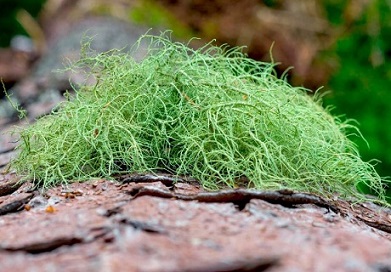Herbs And Phytochemicals: Usnic-Acid-Based Thiazolo-Thiophenes From Lichens Can Be Used As Inhibitors Of SARS-CoV-2 Main Protease
Nikhil Prasad Fact checked by:Thailand Medical News Team Feb 01, 2024 1 year, 1 month, 4 weeks, 1 day, 23 hours ago
Herbs And Phytochemicals: The COVID-19 pandemic, caused by the SARS-CoV-2 virus, has posed significant challenges to global health systems, emphasizing the urgent need for effective antiviral therapies. Despite the decline in case numbers, the threat of new variants and breakthrough infections persists, highlighting the importance of continued research into novel therapeutic agents. Among the various approaches, targeting the main protease (3CLpro) of SARS-CoV-2 has emerged as a promising strategy due to its crucial role in viral replication. In this context, natural compounds have gained attention for their potential as sources of antiviral agents, with usnic acid, a secondary metabolite found in lichens, standing out for its diverse biological activities.
 Usnic-Acid-Based Thiazolo-Thiophenes From Lichens Can Be
Usnic-Acid-Based Thiazolo-Thiophenes From Lichens Can Be
Used As Inhibitors Of SARS-CoV-2 Main Protease
Usnic Acid: A Natural Antiviral Compound
Usnic acid, a dibenzofuran derivative, is abundantly produced by various lichen species and has garnered interest for its broad-spectrum antimicrobial, antitumor, anti-inflammatory, and antiviral properties. It exists in two enantiomeric forms, (+)-usnic acid and (-)-usnic acid, with (+)-usnic acid being more commonly found in lichens like Usnea longissima. The ease of extraction and high purity of usnic acid make it an attractive candidate for drug development.
Synthesis and Characterization of Usnic Acid Derivatives
In the quest for potent antiviral compounds,
Herbs And Phytochemicals researchers have synthesized derivatives of usnic acid with modifications to enhance its activity against SARS-CoV-2. These modifications include introducing thiophene groups and substituents such as methyl, bromo, or nitro moieties. The synthesis process involves several steps, starting from commercially available (+)-usnic acid or extraction from lichen sources. Through meticulous characterization using techniques like 1H- and 13C-NMR spectroscopy and mass spectrometry, the structure of the synthesized derivatives is elucidated, ensuring their purity and identity.
Evaluation of Antiviral Activity Against SARS-CoV-2 Main Protease
The synthesized usnic acid derivatives are subjected to rigorous testing to assess their inhibitory potential against the main protease (3CLpro) of SARS-CoV-2. Enzymatic inhibition assays reveal varying degrees of activity among the derivatives, with some exhibiting moderate to high inhibitory effects. Notably, compounds containing 2-bromo-substituted thiophene moieties demonstrate promising activity, indicating the importance of structural modifications in enhancing antiviral properties.
In an in vitro antiviral assay against six strains (Wuhan, Delta, and four Omicron sublineages) of SARS-CoV-2, (+)-3e demonstrated pronounced antiviral activity against all the strains.
Understanding Mechanisms of Action
To gain insights into the mechanisms underlying the antiviral activity of usnic acid derivatives, kinetic stu
dies and molecular modeling techniques are employed. Kinetic parameters such as inhibition constants are determined to quantify the efficacy of inhibition. Molecular docking simulations elucidate the potential interactions between the derivatives and the active site of 3CLpro, providing valuable information on binding affinities and key amino acid residues involved in ligand-protein interactions.
Active Usnic Acid compound (+)-3e was found to bind with minimum free energy; the binding of inactive compound (+)-3g is characterized by higher values of minimum free energy; the positioning of pure (+)-usnic acid proved to be unstable and is accompanied by the formation of intermolecular contacts with many amino acids of the catalytic binding site.
Molecular Dynamics Simulations
Further elucidation of ligand-protein interactions is achieved through molecular dynamics simulations, which allow for the exploration of the dynamic behavior of the complexes over time. Analysis of trajectory data provides valuable insights into the stability of the ligand-protein complexes and the nature of intermolecular interactions. Notably, compounds exhibiting stable binding and favorable interactions with critical amino acid residues hold promise as potential drug candidates.
Biological Testing Against Infectious SARS-CoV-2 Strains
To assess the clinical relevance of usnic acid derivatives, biological testing is conducted using infectious strains of SARS-CoV-2, including variants such as Delta and Omicron. The antiviral activity of the derivatives is evaluated through assays performed in high-containment laboratories, providing valuable data on their efficacy in inhibiting viral replication. Despite variations in activity levels, certain derivatives demonstrate moderate to potent antiviral effects against multiple strains, underscoring their potential as therapeutic agents.
Conclusion
In conclusion, usnic acid derivatives represent a promising class of compounds with potential antiviral activity against SARS-CoV-2. Through synthesis, characterization, and extensive testing, researchers have identified candidates that exhibit significant inhibitory effects against the main protease of the virus. Molecular modeling and dynamics simulations have provided valuable insights into the mechanisms of action, guiding further optimization of these compounds. While challenges remain in optimizing potency and minimizing toxicity, the findings from this research offer hope for the development of effective therapies to combat COVID-19 and future viral outbreaks.
The study findings were published in the peer reviewed journal: Viruses.
https://www.mdpi.com/1999-4915/16/2/215
For the on
Herbs and Phytochemicals, keep on logging to Thailand Medical News.
